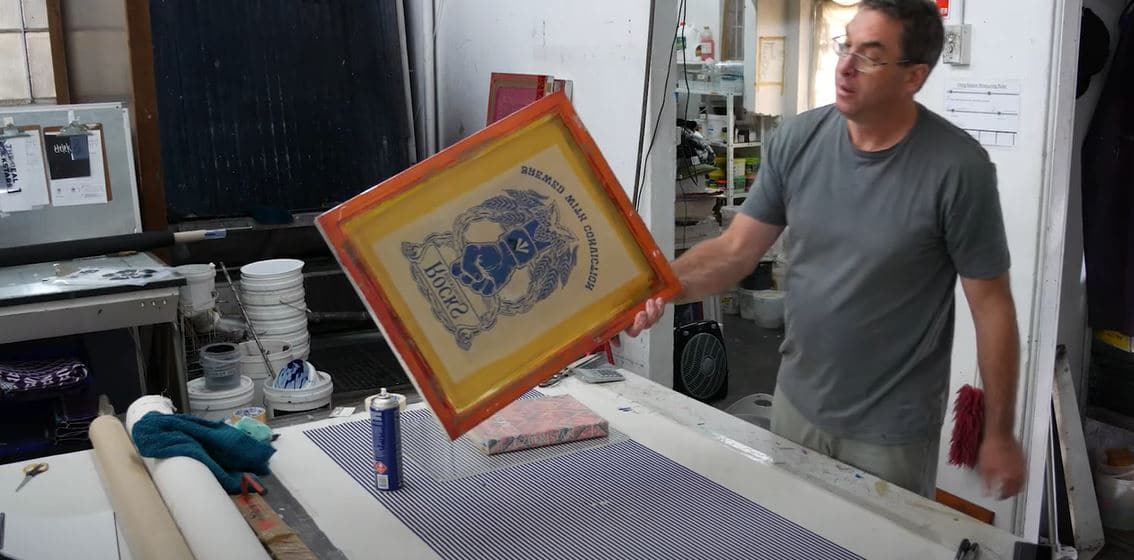The Important Guide to Comprehending Screen Printing and Its Versatile Makes use of
Screen printing has an abundant history that goes back to ancient times, evolving right into an innovative method utilized throughout numerous industries today. This guide checks out the complexities of the screen printing procedure, outlining its applications in style, advertising, and home design - 10:9 Design Screen Printing. Comprehending these basics can open imaginative capacity for both creative and commercial jobs. The complying with sections will certainly reveal vital suggestions and strategies to boost one's screen printing ventures
The History of Screen Printing
Screen printing has origins that trace back centuries, its advancement shows the imaginative and technological innovations of different societies. Coming from old China, the technique was at first made use of for decorating fabrics and later infect Japan, where it became integral to Ukiyo-e woodblock printing. The technique shifted to Europe in the 18th century, where it got popularity among artisans and industrial printers. The invention of photo solution in the 20th century revolutionized screen printing, permitting even more detailed designs and higher performance. Musicians like Andy Warhol further drove its appeal, using the medium to produce legendary works that blended commercialism and fine art. By the late 20th century, screen printing had actually developed itself as a versatile technique, utilized in vogue, advertising and marketing, and art. Today, it proceeds to progress, incorporating electronic technology and expanding its applications across different markets.
The Screen Printing Refine Explained
Screen printing changes imaginative visions right into substantial layouts through a series of accurate steps. At first, a photo is created and afterwards moved onto a screen, typically made from great mesh fabric stretched over a framework. A light-sensitive solution is related to the screen, which is exposed to light, setting in areas not covered by the image. After washing out the unhardened emulsion, a pattern is formed.
Next, the screen is put over the substratum, whether it be textile, paper, or another product. Ink is after that pushed through the open areas of the pattern making use of a squeegee, transferring the style onto the substrate listed below. This procedure can be repeated for multiple shades, calling for different screens for each and every tone. The printed thing is treated utilizing heat to assure the ink sticks appropriately, resulting in a resilient, vibrant design ready for use.
Kinds Of Screen Printing Techniques

In addition, specialty methods, such as discharge screen printing, get rid of color from the material to create softer prints, while foil screen printing uses metallic foil to accomplish a glossy coating (10:9 Design near me). Each method uses distinct attributes, satisfying various imaginative demands and manufacturing ranges, inevitably broadening the opportunities within the screen printing domain name
Applications of Screen Printing in Various Industries

In addition, the signs and advertising and marketing markets utilize screen printing for creating eye-catching display screens and banners. This approach enables for strong colors and elaborate designs that capture attention. In electronic devices, screen printing is used for applying conductive inks to circuit boards, important for component links. The home style sector embraces screen printing to create distinct layouts on textiles and wall surface art. In general, screen printing acts as an important tool across varied fields, improving products with customized and aesthetically appealing graphics.
Tips for Effective Screen Printing Projects
While carrying out a screen printing project, cautious focus to information can considerably improve the final result. Picking top quality products is important; this consists of the screen, inks, and substratums. Making use of appropriate mesh matters can influence ink deposition and detail resolution. Preparation is similarly vital; extensive cleansing of screens and proper direct exposure times assure crisp prints.
Next, exact registration is important for multi-color prints. Utilizing positioning devices can help attain specific layering. In addition, testing prints on scrap materials before manufacturing assists identify possible issues without wasting sources.

Regularly Asked Questions
What Materials Are Ideal for Screen Printing on Fabric?
Cotton and polyester blends are excellent for screen printing on fabric because of their durability and ink absorption. Furthermore, specialty textiles like silk or canvas can produce special appearances and finishes, enhancing the general layout top quality.
How Do I Tidy and Maintain Screen Printing Tools?
To clean and maintain screen printing tools, one ought to regularly wash screens with appropriate solvents, check mops for wear, lubricate moving components, and shop all things in a dry, dust-free environment to extend their life expectancy.
What Are the Ecological Impacts of Screen Printing?
Screen printing can have substantial ecological influences, consisting of chemical waste from solvents and inks, water usage throughout cleansing procedures, and power intake. Sustainable practices and environment-friendly products are crucial for minimizing read more these negative effects.
Can Screen Printing Be Done at Home Effectively?
Screen printing can be successfully done at home with the best materials and techniques. Enthusiasts can develop top quality prints, though success depends upon their skill degree, tools, and understanding of the procedure included.
What Are the Costs Related To Beginning a Screen Printing Company?

Beginning a screen printing company involves expenses for equipment, products, and work area. Initial costs commonly vary from a couple of hundred to a number of thousand bucks, depending upon the range, high quality of equipment, and preferred manufacturing capacity.
Screen printing has an abundant history that dates back to ancient times, progressing into an innovative technique utilized throughout different sectors today. One more strategy, rotary screen printing, utilizes round screens, facilitating constant printing on textile rolls, thus boosting efficiency for massive manufacturings. Additionally, specialty strategies, such as discharge screen printing, remove dye from the textile to create softer prints, while foil screen printing uses metal foil to accomplish a glossy finish. In the style industry, screen printing is widely utilized to develop dynamic layouts on apparel, making it possible for brands to display their distinct styles. Cotton and polyester blends are optimal for screen printing on textile due to their sturdiness and ink absorption.